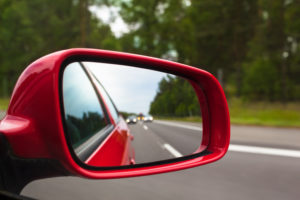Did you know that the National Highway Traffic Safety Administration reports that 840,000 blind spot accidents occur each year in the United States resulting in 300 fatalities? This is a result of drivers not adjusting their mirrors properly, or not properly checking their blind spots while driving.
spot accidents occur each year in the United States resulting in 300 fatalities? This is a result of drivers not adjusting their mirrors properly, or not properly checking their blind spots while driving.
Most vehicles have three mirrors — a side mirror at the front of each of the front doors and a rear-view mirror inside the car at the top of the windshield. These mirrors help you see your surroundings and safely navigate the roadways.
You should always adjust your mirrors before putting a vehicle into gear and moving. Older vehicles adjust manually, while modern cars have an electronic adjustment with controls inside the vehicle.
Mirror Adjustments
- Your rear-view mirror should show your vehicle’s entire rear window. If you do not see your entire rear window, only by eye movement, you need to adjust your mirror.
- To adjust your driver’s side mirror (left side), sit in the driver seat and put your head against the window, then set the left mirror so that only a part of the vehicle’s left side is visible.
- To adjust your passenger’s side mirror (right side), sit in the driver seat and lean to the center of your vehicle, then set the right mirror so that only a part of the vehicle’s right side is visible.
Your rear-view mirror reveals vehicles directly behind you. The mirror shows only a small part of the vehicles that are driving parallel to the driver behind you. The purpose of your side mirrors is to make up for the blind spots that your rear-view mirror leaves and to reveal any vehicles beside you.
When you properly adjust and use your mirrors, you will greatly reduce blind spots by increasing your visibility of the road. Better visibility reduces your risk of causing a car accident by crashing into another driver beside you.


